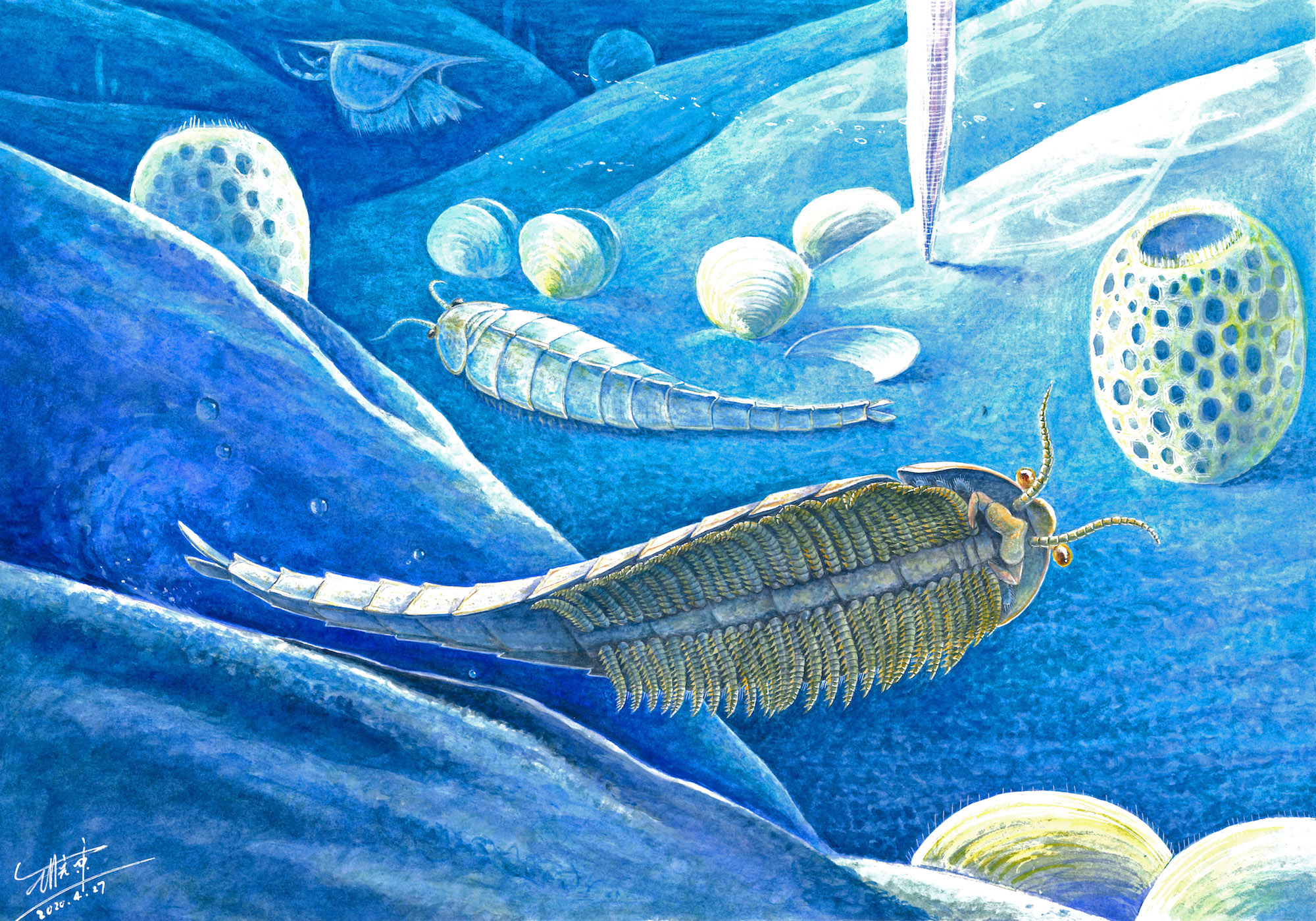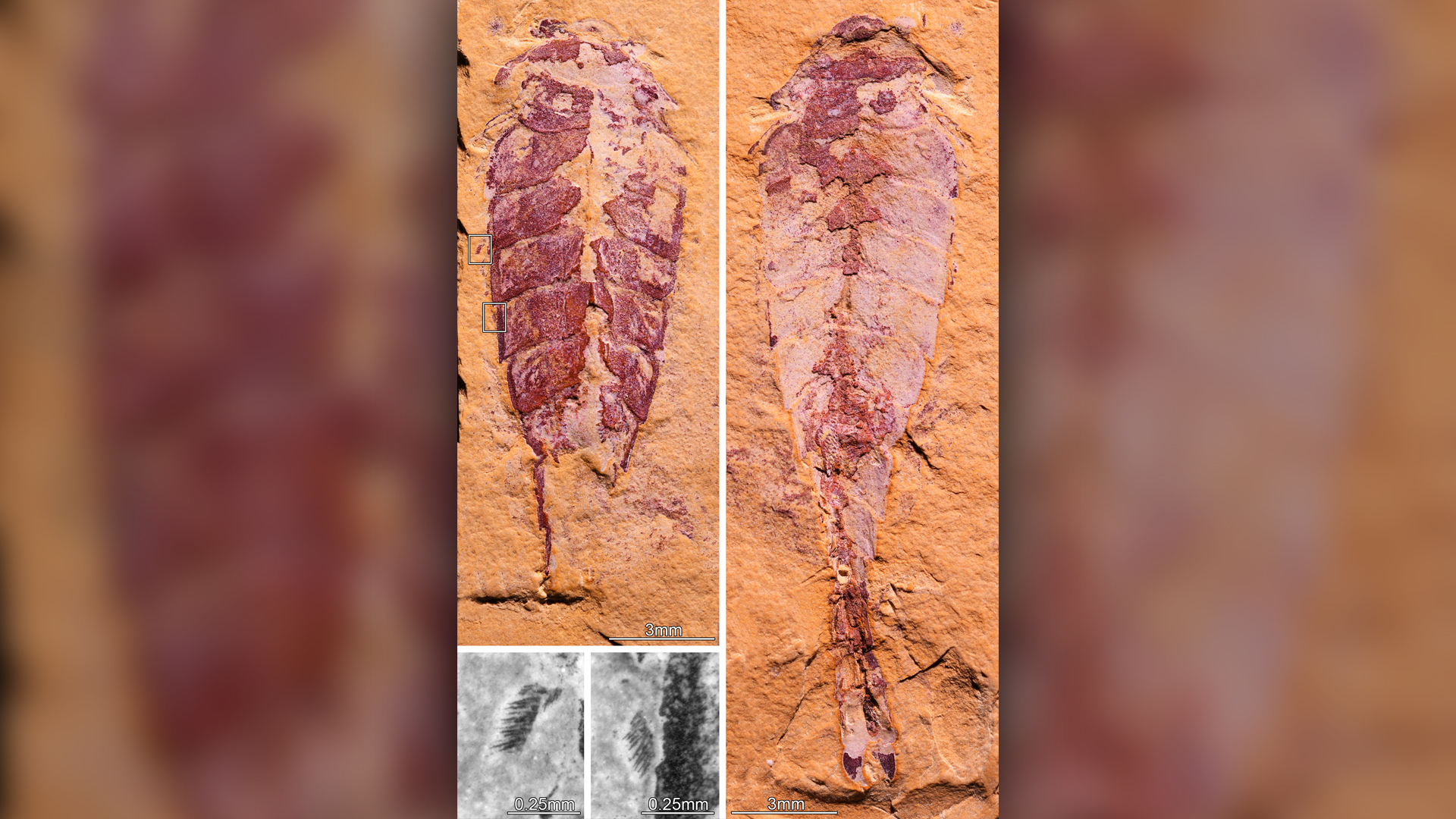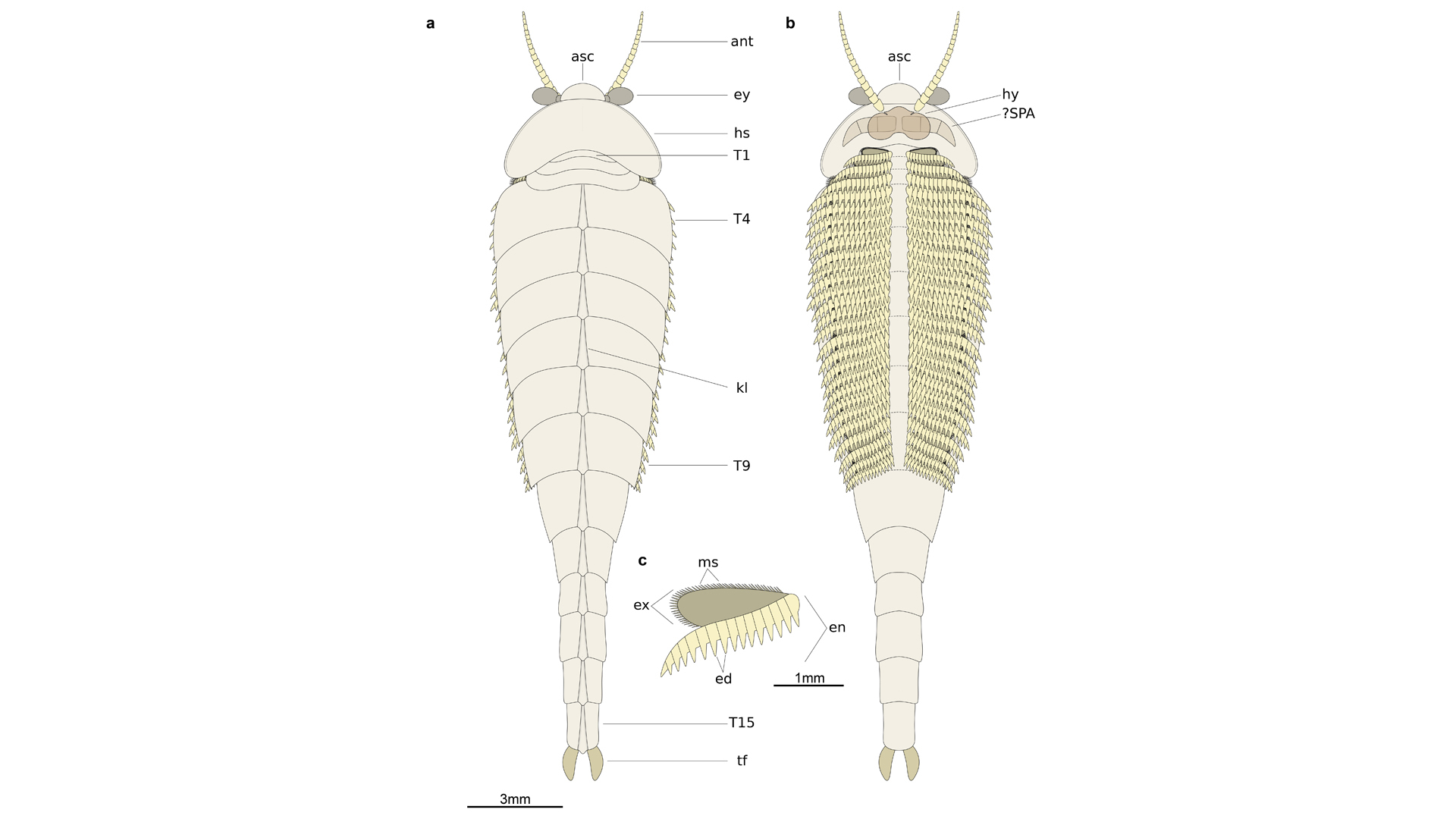Ancient Cambrian shrimp with dozens of dagger legs looked unlike anything alive today

About 518 million years ago, a fierce shrimp-like creature didn't brandish just one "knife," it flashed more than 800 of them; each of its 54 legs had up to 15 dagger-like spines on it, a new study finds.
The name of this newly discovered Cambrian period scavenger, Xiaocaris luoi, literally means "Luo's small shrimp" — and it was small, just 0.8 inches (2 centimeters) long — but its vicious weapons likely meant that its mealtimes were filled with frenzied cutting, the researchers said.
"This is a tiny animal that is nevertheless pretty well equipped for scavenging," study co-lead researcher Javier Ortega-Hernández, assistant professor of organismic and evolutionary biology at Harvard University, told Live Science. "The ecology of its limbs does suggest that it was probably shredding on some smaller organic matter" and soft animal remains, such as worms, on the seafloor.
Related: Photos: Ancient crab is the strangest you've ever seen
The fossil of this mini-shredder was discovered in the Chengjiang biota, an area teeming with amazing Cambrian fossils in China's Yunnan Province. When a rocky chunk was unearthed in the 1980s by Huilin Luo, a now-retired professor at the Yunnan Institute of Geological Sciences (and the inspiration for the new species name), it was thought to contain just one species: Jianshania furcatus, an early type of arthropod, a group that includes insects, scorpions and crabs.
However, when the researchers of the new study decided to take another look at the specimen with a micro CT (computed X-ray tomography) scanner, they were surprised to find a completely unknown species. And it was a weird one at that, said study co-lead researcher Yu Liu, professor and deputy director of Yunnan Key Laboratory for Palaeobiology at Yunnan University in China.
"[It's] a small, ancient relative of the spiders, centipedes, shrimps and insects of today, but with a lot more legs than one would expect for an arthropod," Liu told Live Science in an email. "Normally, an arthropod has only one pair of legs per trunk segment — millipedes of today have two pairs, but the 518 million-year-old Xiaocaris luoi has four."
Sign up for the Live Science daily newsletter now
Get the world’s most fascinating discoveries delivered straight to your inbox.

Image gallery


X. luoi has a number of other weird features, including a boomerang-shaped head shield and stalked eyes, the researchers found. Its two slender antennae, used for sensing its physical and possibly chemical surroundings, have an impressive 18 segments.
"[X. luoi] doesn't look super close to anything alive today," said Ortega-Hernández, who is also the curator of invertebrate paleontology at the Harvard Museum of Comparative Zoology.
For instance, while X. luoi did have a hard exoskeleton to protect itself from predators, such as terrifying claw-faced sea monsters, its gargantuan number of legs sets it apart from any extinct or living arthropod, Liu said. Curiously, while some legs are larger than others, they're all similarly shaped. In other words, the Cambrian creature doesn't have any legs that are specialized for complex behaviors, such as mating.
"Such a simple organization suggests a relatively 'primitive' level of Xiaocaris luoi in arthropod evolution," said Liu, who is currently spending one year as a visiting scholar at Harvard University.
Even so, X. luoi probably got what it wanted out of its legs; when it wasn't shredding up food to gulp down as a soft slurpee, it was likely moving its legs in an "eternal wave" motion to swim around or hover over the seafloor, similar to how sea monkeys move today, Ortega-Hernández said.
The study was published online June 1 in the journal BMC Evolutionary Biology.
- Photos: Ancient shrimp-like critter was tiny but fierce
- Photos: 'Millennium Falcon' predator hunted seas half a billion years ago
- Photos: 508 million-year-old bristly worm looked like a kitchen brush
Originally published on Live Science.
OFFER: Save 45% on 'How It Works' 'All About Space' and 'All About History'!
For a limited time, you can take out a digital subscription to any of our best-selling science magazines for just $2.38 per month, or 45% off the standard price for the first three months.

Laura is the archaeology and Life's Little Mysteries editor at Live Science. She also reports on general science, including paleontology. Her work has appeared in The New York Times, Scholastic, Popular Science and Spectrum, a site on autism research. She has won multiple awards from the Society of Professional Journalists and the Washington Newspaper Publishers Association for her reporting at a weekly newspaper near Seattle. Laura holds a bachelor's degree in English literature and psychology from Washington University in St. Louis and a master's degree in science writing from NYU.










